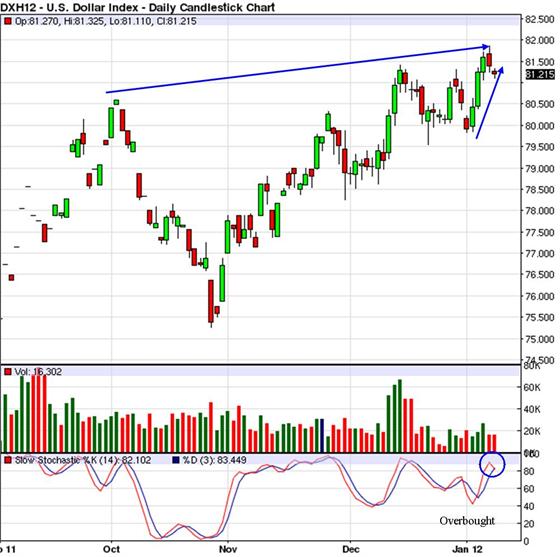Agronomist notes
Hello Reader,
It’s been a busy week of grain hauling and the weather has been fantastic for it. Did you know the MD of Foremost has put on road bans? In January! Winter wheat is greening up and we could be at flag leaf by spring if the mild weather continues. Seriously though, winter wheat is in dire need of snow cover before we get a major freeze below -20C or there will be some ugly damage.
In this week's issue I’ll run the numbers of nitrogen requirements to build maximum economic yield in wheat. We’ll also look at a great video on how to measure soil compaction with some simple and effective tools that every farmer has on hand. I’ll pass along a few website’s to help buy or sell used precision ag equipment and also include a comment on the use of growth regulators from a seasoned veteran in the UK. We’ll finish with technical grain market news.
Have a great week.

Nitrogen applications for achieving maximum economic yield
Running the numbers for the best timing
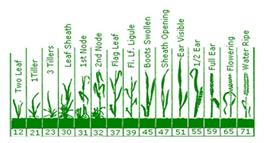 There is a theory called maximum economic yield in wheat that suggests nitrogen timing should occur in split applications at specific growth stages. The purpose of the split applications is to match the nitrogen requirement of spring wheat at specific growth stages. Below I will run the numbers on how much nitrogen is required at specific growth stages to match nitrogen applications with nitrogen demand. In this exercise I really want you to come away with how much nitrogen is required at specific growth stages so you can chose which split application would work for you. Perhaps it’s just two applications to start, maybe four, it doesn’t matter. I just want you to understand how much nitrogen is required at specific growth stages and from there you can match up what is possible given your farm scale and equipment.
There is a theory called maximum economic yield in wheat that suggests nitrogen timing should occur in split applications at specific growth stages. The purpose of the split applications is to match the nitrogen requirement of spring wheat at specific growth stages. Below I will run the numbers on how much nitrogen is required at specific growth stages to match nitrogen applications with nitrogen demand. In this exercise I really want you to come away with how much nitrogen is required at specific growth stages so you can chose which split application would work for you. Perhaps it’s just two applications to start, maybe four, it doesn’t matter. I just want you to understand how much nitrogen is required at specific growth stages and from there you can match up what is possible given your farm scale and equipment.
To start, the timing of nitrogen applications to achieve maximum economic yield theory in wheat suggests that split applications of nitrogen should occur as follows: 40% pre-plant, 10% starter, 25% at tillering (GS 21-26) and 25% at stem elongation (GS 30-32). An additional nitrogen application at swollen boot stage (GS 45) can also assist with head fill and protein. In our example we’ll aim for a spring wheat yield target of 100 bu/ac or 6.7 T/ha for the metric folks. To produce a 100 bu/ac wheat crop you would need approximately 15 inches of rainfall.
The nitrogen uptake requirement of a 100 bu/ac spring wheat crop at 13.5% protein is 250 lbs/ac. We’ll assume 7 lbs/N/ac of N released from organic matter on a soil with 4% organic matter and 32 lbs/N/ac in the soil in the top 24 inches.
If you were to apply the maximum economic yield theory, here are the nitrogen requirements at specific growth stages. Total N required = 250 lbs/ac – 28 lbs/N – 32 lbs/N = 190 lbs/N/ac
40% Pre-plant: 190 lbs/N/ac × 40% = 76 lbs/N/ac
10% Starter: 190 lbs/N/ac × 10% = 19 lbs/N/ac
25% Tillering (GS 21): 190 lbs/N/ac × 25% = 47.5 lbs/N/ac
25% Stem elongation (GS 30): 190 lbs/N/ac × 25% = 47.5 lbs/N/ac
2.5% Swollen boot (GS 45): 190 lbs/N/ac × 2.5% = 4.75 lbs/N/ac
If you break down the logistics and timing of nitrogen applications listed above, there are three clear times we should be applying nitrogen. The first is the most simple which is at the time of seeding. Our crops typically move from planting to tillering in 35 days so applying 75% of your nitrogen needs at the time of seeding should provide enough to build 1 main stem and 2 tillers. It doesn’t make logistical sense to apply 50% of our nitrogen at seeding only to go back 35 days later and start top dressing nitrogen, when the sprayer is busy with herbicides. It just doesn’t fit.
The second stage and the one often overlooked is stem elongation (GS 30). This is where we in Western Canada have a chance to build yield through the production of larger heads. This stage occurs roughly 45 days after planting and by then we have a good idea what sort of growing season its shaping up to be. The timing would be in between herbicide and fungicide applications. Who needs a break from the cockpit anyways, right? The challenge would be to find a nitrogen source that did not rely on rainfall to wash it into the soil for plant uptake. That brings us back to liquid urea.
The last stage of nitrogen application is swollen boot GS 45 to full head emergence at GS 59. Applying nitrogen at this stage does not boost yield but protein instead. Again, foliar urea is a good fit here as nitrogen requirements are at this stage and research has shown only 4 to 7 lbs/N/ac is necessary to boost protein by 1%. By this stage we’re 70-80 days after planting and into our warmest time of year. Foliar urea applications would be limited to cool days or evenings when temperatures drop below 15oC. Thankfully in our area, it’s quite common to drop down below 15oC even though our daytime highs might reach 30oC.
In the end, applying nitrogen in split applications to meet maximum economic yield would be challenging at best. I still feel we should apply 75% at seeding to cover off the risk of not getting on in a wet season. It also provides enough to build the number of heads we desire. If you are looking to split apply nitrogen, I suggest you look at stem elongation to apply your first split application to build higher kernel numbers (bigger heads). You can follow up later with a second application between swollen boot to full head emergence to boost protein. SL
Pictured above: Zadoks growth stages
Assessing soil compaction
by Case IH Experts
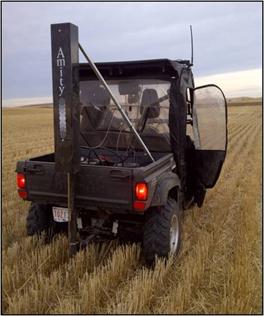 I came across a great video on Twitter showing a simple method of measuring the depth of soil compaction and the thickness of the soil compaction layer in our soils. The technique uses a shovel and a pocket knife.
I came across a great video on Twitter showing a simple method of measuring the depth of soil compaction and the thickness of the soil compaction layer in our soils. The technique uses a shovel and a pocket knife.
I really appreciate the video for its simplicity. For the last few years we’ve been running around with fancy hand held penetrometers measuring psi readings, which really add up to so what! You have a psi reading of 400 Mr. Farmer, now what? To kick it up a notch, my colleague and precision farming specialist Colin Bergstrom from Point Forward Solutions stepped up and bought a hydraulically driven penetrometer from Amity that measures psi down to 18 inches. The hydraulics provide an even down pressure so readings are consistent which is better than a hand held. The only down side is that the readings will vary depending on soil moisture and furthermore, not everyone has access to one.
The video here by Case IH shows simple tools to measure where your compaction layer is, tips on investigating root growth around the compaction layer and where to set your deep ripper points to gain the maximum effect when ripping. SL
Pictured above: Amity hydraulic compaction detector owned by Point Forward Solutions
Buy and sell used precision ag equipment
One of the biggest beefs in our industry is buying expensive technology that becomes obsolete within a year. How many of you have GPS’s, autosteers and rate controllers sitting in a heap on a shelf somewhere in the shop? If you do find yourself with a piece of technology that you want to sell or are looking around to buy, these websites may fit the bill.
Thanks to Tim Neale of Precision Agriculture for the handy websites. SL
Comment on plant growth regulator article
My good friend Nick Ward Esq. from England sent me a few comments on the use of growth regulators. We’re newbies at the use of PGR’s and Nick is a seasoned veteran when it comes to what to expect and what to look for. Here are his comments:
I’ve been interested to read that you guys are cranking up the intensity with growth regs, etc. I thought I’d give you a few thoughts on them to chew over.
Chlormequat products can be prone to “bounceback.” They regulate growth for a period, but after that the plant has a growth spurt and can actually over compensate and end up taller! The way to avoid this is to use a split programme. This may not be an issue in your spring crops as everything happens so much faster, but it is an issue we are faced with, especially in barley. Watch out for chlormequat residues in the end product. We have had issues especially in baby foods containing oats (leading to some very small people!).
I think I read in one edition about barley crops with straw breaking over before harvest especially with more N input. Ethephon based growth regulators will help with this (we call it brackling). Just watch out for the short half life of ethephon products in alkaline water. It lasts about 20 minutes due to a process called alkaline hydrolysis. You’ll need to buffer the pH to be slightly acidic in the spray tank. Even then don’t leave in the spray tank overnight. They can also be quite harsh and need cooler/humid conditions for optimum application.
If you really want to shorten something use trinexapac ethyl but only at very low rates and only early season. It’s a good partner for chlormequat and really makes it work.
All growth regs need a healthy, growing plant with no nutrient disorders and warm but not hot conditions.
Nick Ward, Linconshire, UK
Market News
Technicals
Canola: Nov12: The long term trend is down and the short term trend is up.
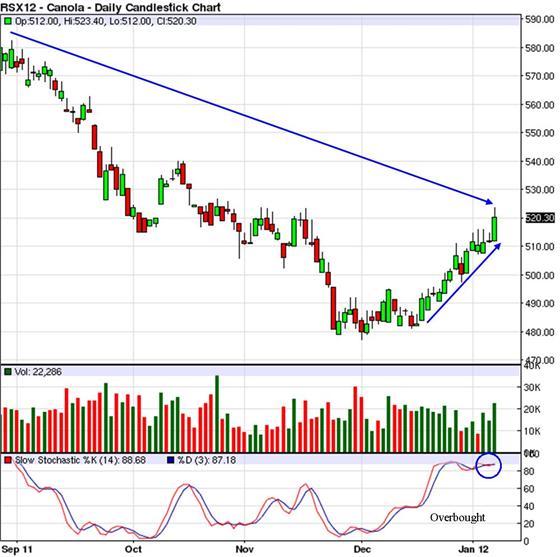
Wheat: Dec12: The long and short term trend is down.

Corn: Dec12: The long and short term trend is down.
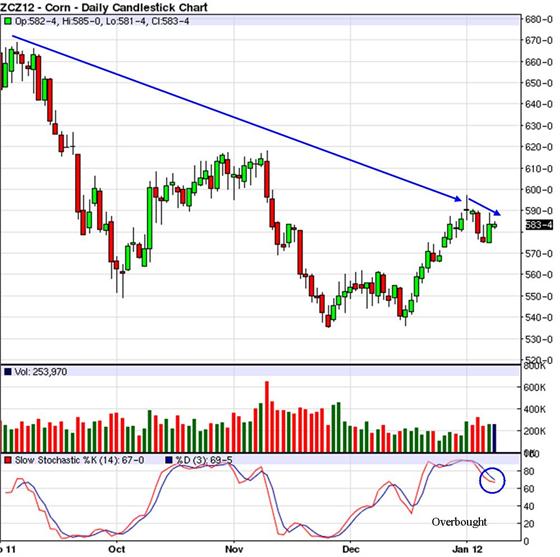
Soybeans: Nov12: The long and short term trends are down.
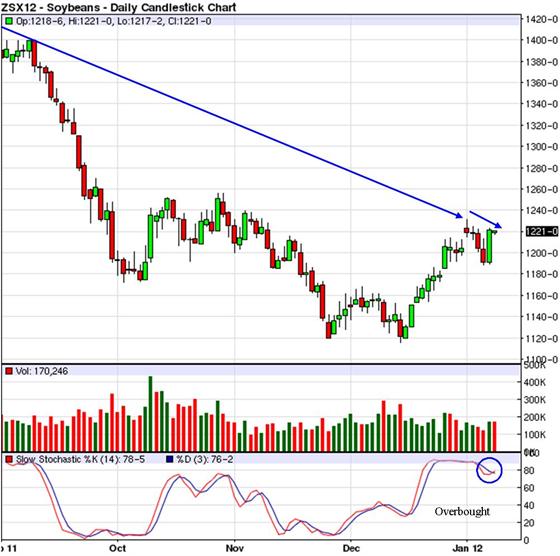
Canadian Dollar: Mar12: The long term trend is up and the short term trend is down
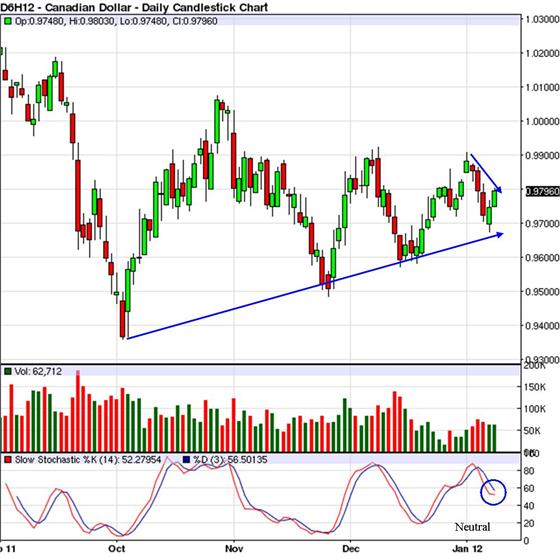
USD: Mar12: The long and short term trends are up.
